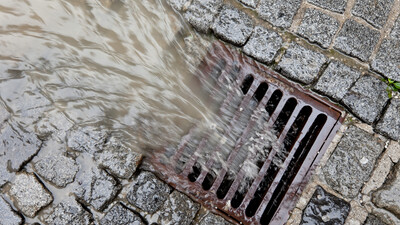What is a drain gully and what does it do?
You may also hear them referred to as gully drains or gully traps, but they are all one and the same, so to avoid confusion we’ll refer to them as drain gullies
Whether they are used on a highway or house, drain gullies collect water from a surface or pipework and divert it to a wastewater or stormwater drain. They also feature a trap, which is used to capture debris that might block drains and prevent unpleasant smells, dangerous gasses and rodents from escaping the sewer or drain.
Why are there so many types of drain gully?
Let’s simplify this by describing each type of drain gully and where it is used.
P-trap drain gullies
It’s easy to see where a P-trap drain gully gets its name; hold it vertically in your hand and rotate it a quarter-turn, and you will see it forms the shape of the letter ‘P’ (if you don’t rotate it, you may think it resembles the letter ‘U’, which is why they are sometimes called U-bends.
You will most commonly find these at home where a waste pipe emerges through an outside wall and drops to a small grating. This handles wastewater, which is the water from a sink or washing machine (gullies were also once used for water coming from showers and baths, but this is nowadays more commonly connected to an internal stack pipe).
The grating sits on the top of the gully hopper, which leads to the bend of the trap (the gully pot) and is used to prevent large debris such as leaves from entering the hopper.
The bend of the P-trap drain gully creates a space that is constantly filled with water, due to the upper wall of the bend at its lowest point (the gully pot) being lower than the bottom of the pipe wall as it leaves the trap. This water trap is generally sufficient to keep any debris that passes the grating from entering the drain and causing a blockage. It also prevents smells, gasses and rodents from escaping.
One disadvantage of a P-trap drain gully is that it can’t be rodded if the drain is blocked. That brings us to the bottle trap drain gully.
Bottle trap drain gullies
One key difference between the bottle trap and P-trap drain gully designs is that the bottle trap can be rodded.
The removable hopper of a bottle trap drain gully features a pipe at its base that sits in the chamber of its bottle-shaped gully pot. As the bottom of this pipe sits lower than the lowest point of the gully pot’s outlet pipe, a water trap is formed between the hopper pipe and the gully pot.
In the event of a blocked drain, the hopper can simply be removed and the drain is immediately accessible for rodding.
Now let’s move on to the drain gullies we notice more frequently, particularly when they become blocked – road drain gullies.
Road drain gullies
Road drain gullies differ from the previous two designs in that they are used to collect stormwater from large surface areas such as roads, car parks and hardstanding areas such as loading bays, docks and airports.
Unlike a gully used to collect wastewater, road drain gullies feature a heavy-duty cast iron or ductile steel grating that can withstand heavy weights and high-speed traffic.
As the required weight loading varies considerably depending on where the road drain gully is located, a system of loading classes has been developed to ensure a suitable grating is specified for each situation. We go into these loading classes in a previous blog post.
So that, in brief, covers the different types of drain gully. We hope you have found this information helpful and interesting, and if you have any further questions you are always welcome to call our friendly team of experts on 01420 555600 or email [email protected].
Also, look out for more articles in our ongoing series of blog posts, bringing you useful information, insights, guides and tips on all things drainage!

Written by
Bob Stone
Technical Sales
Heading up our Technical Estimating Department, Bob is our in-house quantity surveyor.

